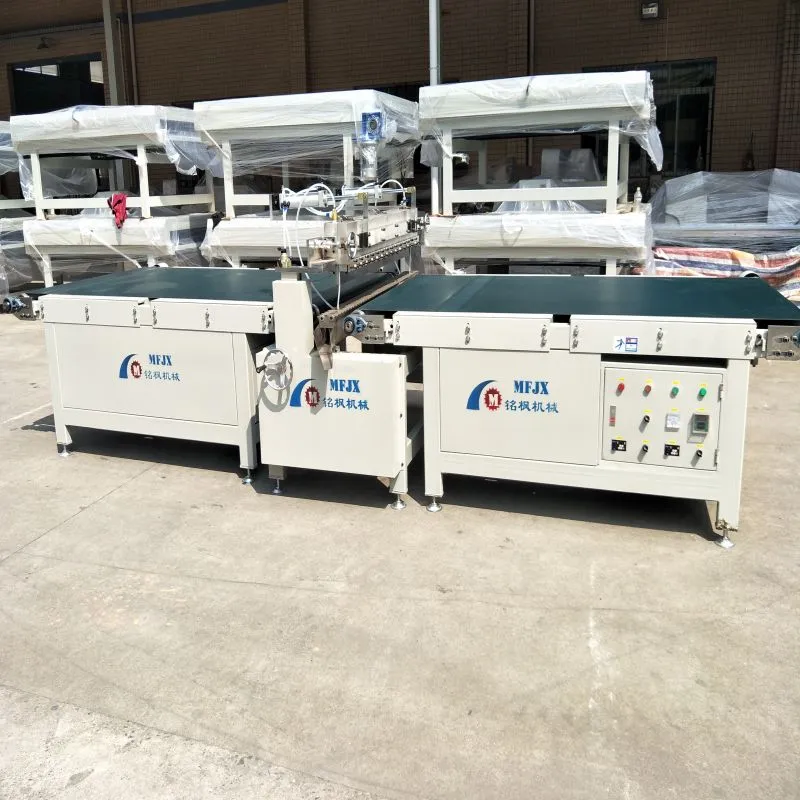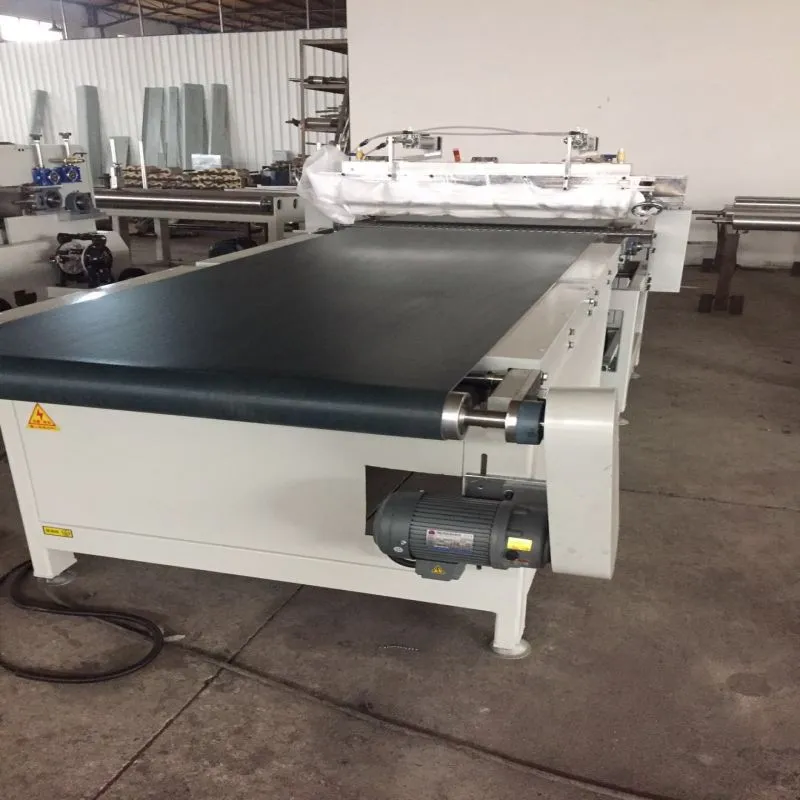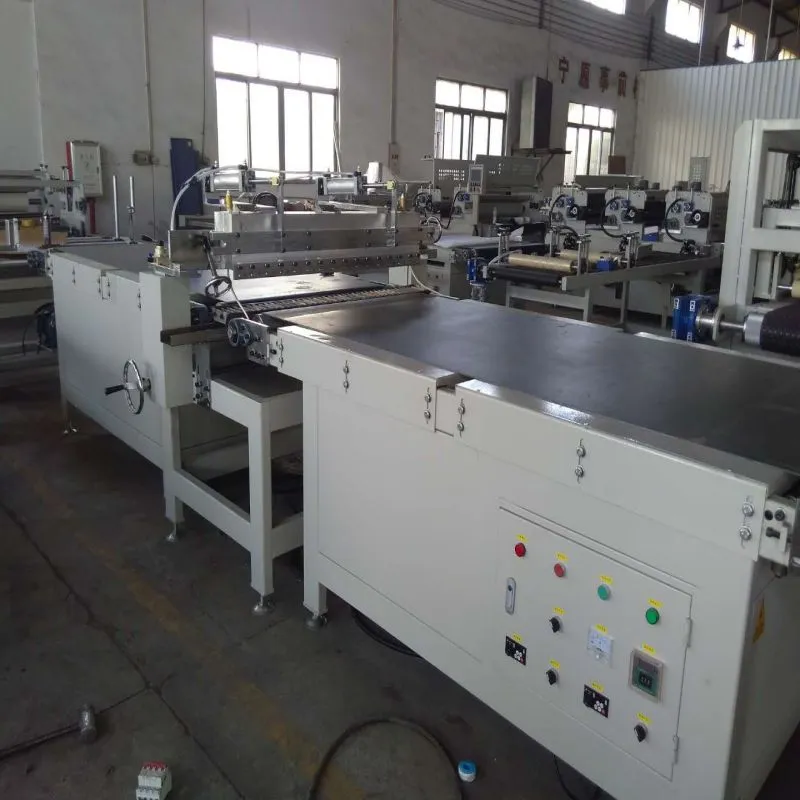In the field of coating technology, curtain coating machines are widely used in optical films, packaging materials, decorative papers, functional films, and other fields due to their non-contact coating, high uniformity, and high efficiency.
When companies select or commission curtain coating machines, one of the most common questions they ask is: What is the typical operating speed of a curtain coating machine?
To accurately answer this question, it's important to understand that the operating speed of a curtain coating machine is not a fixed value but a dynamic parameter that is closely related to the coating fluid characteristics, coating thickness, curtain stability, and substrate properties.
Generally speaking, curtain coating machine operating speeds range from 0.5 to 10 m/min.
• Pilot-scale equipment: 10 to 50 m/min.
• Industrial production curtain coating machines: Typical operating speeds range from 30 to 200 m/min.
• High-speed, high-precision curtain coating machines (such as those used in optical film production) can operate stably at speeds of 300 m/min or higher.
However, the speed isn't always the fastest; it should be determined based on the balance between curtain stability and coating performance. Below, we'll analyze the key factors that influence curtain coating machine operating speed.

Why is curtain coating machine speed so important?
In the curtain coating process, operating speed not only determines production efficiency but also directly impacts coating thickness, uniformity, and surface quality. Its importance is reflected in the following aspects:
1. Determining Coating Thickness and Deposition
When the curtain coating machine speed increases, the contact time between the substrate and the liquid curtain per unit time decreases, resulting in a thinner coating thickness. Conversely, decreasing the speed results in a thicker coating.
Thus, operating speed and coating thickness have a clear negative correlation.
2. Influencing Curtain Stability
The liquid curtain is a free-falling film formed by gravity and flow rate. Excessive speed can cause the curtain to break or fluctuate, while too slow speed can result in discontinuous coating or localized buildup.
3. Influencing Leveling and Drying Coordination
If the speed is too fast, the coating will cure before it has fully leveled, easily resulting in streaks or orange peel. If it is too slow, excessive solvent evaporation can lead to defects such as bubbles and pinholes.
In summary, the operating speed of the curtain coating machine is a key parameter that determines coating quality and production stability, and must be precisely controlled during testing and production commissioning.

What factors mainly influence the speed of a curtain coating machine?
The speed setting for a curtain coating machine isn't arbitrary; it's influenced by a variety of physical and process parameters. The following factors are crucial for speed selection:
1. Coating Rheological Properties
The coating's viscosity, surface tension, and leveling properties are primary determinants of speed.
• High-viscosity coatings require lower speeds (20-80 m/min) to maintain a stable curtain.
• Low-viscosity coatings can operate stably at higher speeds (100-250 m/min).
• Shear-thinning systems are suitable for high-speed curtain coating because the viscosity decreases during flow, resulting in a smoother curtain.
Excessively high viscosity or low tension can lead to curtain breakage and uneven flow lines.
2. Curtain Height and Flow Rate
The free-fall height of the curtain (generally 100-300 mm) and the coating flow rate closely influence the feasible speed range.
• As the flow rate increases, the thickness of the liquid curtain increases, allowing for higher operating speeds.
• As the height of the liquid curtain increases, its potential energy increases, making the curtain more stable and allowing for higher speeds.
However, if the flow rate or height is improperly controlled, even high-end curtain coating machines may experience curtain fluctuations at high speeds.
3. Substrate Characteristics
The surface energy, adsorption properties, and tension characteristics of different substrates directly affect the speed.
• Smooth, high-tension substrates (such as PET film) are suitable for high-speed operation (>150 m/min).
• Porous or rough substrates (such as paper) require a lower speed (30-80 m/min) to prevent air bubbles and uneven penetration.
Therefore, when setting the speed of the curtain coating machine, it is important to optimize it based on the substrate type.
4. Coating Thickness Requirements
Thin coatings generally allow for higher speeds because the flow rate is lower and leveling is easier; thicker coatings require a lower speed to prevent curtain breakage.
For example:
• Optical film coatings with a thickness of 1-3 μm can run at 200-300 m/min;
• Functional coatings with a thickness of 10-20 μm are recommended at 50-100 m/min;
• Ultra-thick functional layers (>50 μm) often require a speed of 30-60 m/min.
5. Drying and Curing Conditions
If the curtain coating machine is used in conjunction with a hot air dryer or UV curing equipment, the speed must match the drying efficiency.
• High drying capacity → Increased speed possible;
• Insufficient drying → Reduced speed necessary to prevent residual solvent or surface defects.
Therefore, matching the coating speed with the drying system is key to balancing the production line.

Is a faster curtain coating machine always better?
Many people mistakenly believe that "higher speeds mean higher production efficiency." However, for curtain coating machines, speed and quality are often inversely proportional.
Higher speeds can indeed increase production capacity, but exceeding the stable range of the liquid curtain can lead to serious quality issues.
Key risks include:
1. Curtain breakage or splashing
When line speeds are too high, the shear between the liquid and air is intense, causing the curtain to break, entrain bubbles, or form ripples.
2. Coating thickness fluctuation
Coating may not be deposited stably, resulting in uneven film thickness and increased edge thickness differences.
3. Increased surface defects
Excessive speeds shorten leveling time, making defects such as streaks, particles, and flow marks more likely to appear.
4. Drying mismatch
If drying capacity is insufficient after high-speed coating, residual solvent can cause subsequent adhesion or surface gloss loss.
Therefore, the speed of the curtain coating machine should be determined when four conditions—curtain stability, coating uniformity, leveling, and drying mismatch—are simultaneously met.
How to determine the optimal operating speed of a curtain coating machine?
In industrial production, the following principles are generally followed to determine the optimal speed of a curtain coating machine:
1. Establish a curtain stability window
Test the curtain stability window at different flow rates to find a speed range where no breakage or fluctuations occur.
2. Observe the coating surface
Use online gloss, thickness, or optical interferometry to determine surface smoothness and uniformity.
3. Match the drying system
Gradually increase the speed and adjust the drying temperature simultaneously to observe for residual solvent or incomplete curing.
4. Focus on production stability
Even if the equipment can run at 300 m/min, if the liquid curtain stability is optimal at 250 m/min, 250 m/min should be the standard speed.
This systematic approach allows you to accurately determine an efficient and stable operating speed.

Do the speeds of different types of curtain coating machines vary significantly?
Yes, curtain coating machines with different structures and uses have significant operating speed differences. The following describes the main types:
Curtain coating machine types | Typical speed range (m/min) | Features |
| Single-layer curtain coating machine | 30-150 | Simple structure, suitable for general functional films |
| Double-layer curtain coating machine | 50-200 | Can coat two layers simultaneously, requiring higher flow stability |
| Multi-layer curtain coating machine | 100-300 | Used for multi-layer lamination of optical or functional films |
Experimental curtain coating machine | 0.5-10 | Wide adjustable range, suitable for parameter verification |
| High-speed industrial curtain coating machine | 150-350 | Supports large-scale continuous production, supported by high-precision control systems |
It can be seen that: High-end multi-layer curtain coating machines have stronger liquid curtain control and flow management capabilities, so operating speeds can be significantly increased without sacrificing stability.
What is the relationship between curtain coating machine speed and coating thickness?
The speed of a curtain coating machine and coating thickness are generally inversely proportional.
Assuming a constant flow rate, when the speed doubles, the coating amount per unit area is halved, and the coating thickness is also halved. The mathematical relationship can be expressed as: coating thickness ∝ (flow rate / speed).
This means that in actual control, by precisely adjusting the speed, coating thickness can be fine-tuned, achieving nanometer-level control.
For example:
• If the target thickness is 2 μm, the speed can be set to 200 m/min;
• If the target thickness is 4 μm, the speed should be adjusted to approximately 100 m/min.
Therefore, speed control not only affects efficiency but is also a crucial means for precise thickness adjustment.
What are the key points for adjusting the speed of a curtain coating machine?
During commissioning and operation, speed adjustment should be performed with caution. The following are key operational recommendations:
1. Increase the speed gradually, avoiding sudden changes
Sudden speed increases can cause the liquid curtain to break, so the speed should be adjusted in stages.
2. Observe the condition of the liquid curtain
The surface of the liquid curtain should be continuous and smooth, without ripples or bubbles.
3. Monitor flow and pressure in real time
Finely adjust the liquid flow rate after each speed change.
4. Adjust drying parameters simultaneously
Speed changes alter drying time, so temperature and airflow should be adjusted accordingly.
5. Record stable intervals
Establish a comparison chart between operating speed and coating quality to provide a basis for long-term production.
Through these operating methods, the curtain coating machine can achieve stable and reliable high-speed operation.
Does XMF Machinery offer discounts or promotions?
Yes, XMF Machinery regularly provides sales promotions, discounts, and wholesale offers to support buyers worldwide. Customers who purchase coating equipment directly from our factory enjoy low prices without compromising high quality. Our company values long-term cooperation, so we provide flexible quotes and special prices for bulk purchasing.
Whether you are buying a single roller coater or a customized production line, our manufacturer discounts ensure cost savings. Stay in touch with our sales team to receive the latest promotions and enjoy reliable supply at affordable prices.
